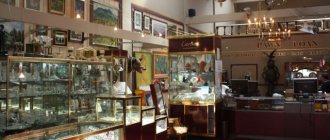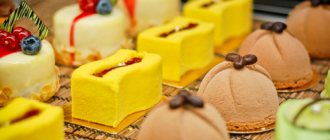Features of the tea business
What small business is hot right now in 2021? Everything related to popular goods and services, including tea. But we should not forget that trading such products is a rather specific activity. Domestic consumers are accustomed to cheap, low-quality goods with various flavoring additives. Many people consider raspberry or lemon flavored tea bags to be the height of perfection. It is unlikely that they will buy real tea with a pleasant taste, which costs several times more. Based on this, we can conclude that marketing in the tea business is a very important aspect that requires special attention. Nowadays, it is difficult to find people competent in this field, so you must hire real specialists who can convey to consumers all the benefits of quality tea.
Before opening a tea business from scratch, you need to understand all the features and nuances of this line of activity. Tea is always in demand as it is difficult to find a person who does not love this delicious aromatic hot drink. In order to open a tea shop business, you will need certain investments, but they will pay off in the shortest possible time. For your business to be successful, you need to set a clear goal and gradually move towards it.
If you don't know anything about this industry, start with a franchise. Thanks to this, you will be able to obtain the necessary knowledge and assistance from specialists at the initial, most difficult stage. After you understand all the processes, you can open another outlet, but on your own, without using well-known brands.
Advantages and disadvantages
New ideas for business 2021 with minimal investment have their strengths and weaknesses. This also applies to the tea trade.
Pros:
- Not very large starting capital. You don’t have to buy expensive equipment, rent a huge premises and purchase a large batch of goods;
- Tea is not a perishable product and therefore does not require special storage conditions. You won't have to worry about selling your product quickly because it might go bad;
- The demand for such products is not subject to seasonal fluctuations;
- Along with tea, you can sell various related products;
- A specialized tea shop as a business is an elegant and quite prestigious line of business. Tea trading brings pleasure not only to sellers, but also to buyers. No one will remain indifferent to the aromas floating in the tea shop.
Minuses:
- High level of competition.
What business is currently relevant in 2021 amid the crisis in Russia? This question cannot be answered unambiguously. Experts recommend choosing an area related to essential goods. They value tea trading as a business with high profitability, so you can’t go wrong if you start working in this direction.
Permits and documents
Business registration
Registration of an individual entrepreneur is an ideal solution for registering a tea shop. Submit the following package of documents to the Federal Tax Service office at your place of residence:
- Application for registration on form No. P21001
- Original and photocopy of passport
- Receipt for payment of state duty
Suitable OKVED code: 47.29 - Retail trade of other food products in specialized stores/
It will take no more than three days to receive a certificate of registration of an individual entrepreneur. After you select a suitable premises and enter into a lease agreement, obtain permission to trade from the local authorities, as well as permission from the sanitary and epidemiological station and the fire department.
Business plan
Sample business plan for a tea shop:
- Summary. In this paragraph, it is necessary to describe the purpose of the project, the approximate amount of starting investments and key financial indicators of the project;
- A short description of the industry and company;
- Product description. What is included in the assortment of the outlet;
- Sales and Marketing. Development of a marketing strategy;
- Production plan. Equipment and personnel;
- Organizational plan. Distribution of duties;
- Financial plan. Expenses and profits;
- Project effectiveness assessment;
- Risks and guarantees.
Tea dreams: how to make luxury tea trading profitable
The collapse of the Tea Mecca
Almazov’s voyages often ended in St. Petersburg, and he noticed that there was no good tea in the city. In 2013, Almazov moved to St. Petersburg and began looking for premises for a tea shop. Suitable, 30 sq. m, found in the city center. The rent was about 50 thousand rubles. per month, you had to pay the first and last months immediately, as well as leave a deposit.
Andrey Almazov (Photo: Ekaterina Kuzmina for RBC)
Read on RBC Pro
Out of spite Kawasaki: how loyalty defeated competence in Russia Billionaire downshifter: how a mortgage seller got rich by comparing prices So says Gref: there are few people with a “nuclear engine” inside Hiring with a demotion: is it worth hiring a former manager for a linear position
For tea ceremonies, Almazov purchased special tea boards made of pear wood, tea tables, teapots made of purple Yixing clay and gaiwan (brewing cups with a saucer and lid). He bought 50 premium varieties of Chinese tea from distributors - green, turquoise, red, yellow and white.
The launch of the Tea Mecca store cost the sailor 1 million rubles. “Everything was as needed, I was happy and waited for clients,” recalls Andrey.
We had to wait a long time.
Shades of real tea
Turquoise tea is the name given to oolong semi-fermented teas (fermentation is the main stage of tea leaf processing, consisting of roasting and oxidation); they are produced in only three places in China.
Red tea is highly fermented, which is what is called black in Europe.
White tea is a weakly fermented tea, named after the appearance of a tea bud, densely covered with white hair.
Yellow is the rarest and most expensive type of Chinese tea. Previously, only the imperial family and nobility could drink yellow tea.
“For most people, there are only two types of tea - black and green,” says Andrey Almazov. “And such subtleties as yellow or turquoise tea are interesting only to a narrow layer of people, but they are our customers.”
Almazov made a typical mistake of novice entrepreneurs. “I was sure that the tea that I liked would sell best, and flavored varieties are already sold on every corner,” he recalls, explaining his refusal from popular flavored teas (such as the popular “Strawberries with Cream” ) and a bet on premium tea.
It quickly became clear that Andrey had a poor understanding of his own buyer. The first question that people entering the store usually asked was: “Where do you have Earl Gray and Night of Cleopatra?” Not finding what they wanted, people left. “Shops in shopping centers have taught us that flavored varieties are real tea,” Almazov is indignant. “That’s why people don’t understand what it’s like: a tea shop, but Cleopatra isn’t there.”
But Almazov decided not to give up. He was patient and explained to each client the advantages of real oriental tea. And to be even more convincing, he turned the process of communicating with a client into a real performance: in the middle of the store he placed an ebony tea table for 12 people and greeted clients, sitting in a kimono with a cup of tea in his hands. But this move didn’t work either: the people who entered the store most often did not dare to distract the tea-drinking Almazov and quickly left.
Andrey Almazov (Photo: Ekaterina Kuzmina for RBC)
Saving money, Almazov worked himself, seven days a week, from morning to evening. But it never came to a profit. At best, he was able to cover rent and operating expenses. “I lasted in this mode for two years. I lived on savings until I realized that I had no physical or moral strength, my body was at zero,” recalls Andrey.
In 2020, Almazov decided to sell the business. He was lucky - a buyer was found quickly: he became one of the regular customers who liked the atmosphere and assortment. Almazov sold “Tea Mecca” “at the price of the remaining goods,” for 500 thousand rubles, having lost almost 1.5 million rubles in the experiment.
The owner of the capital's Tea Heights tea and ice cream house, Viktor Enin, says that the reason for the closure of many small tea projects is the incompetence of their owners, who are not well versed not only in tea, but also in the characteristics of demand. From the outside, business seems simple and interesting, but the reality disappoints many.
After the deal, Almazov left for his native Novorossiysk to think about what to do next. In the end I decided to try again.
World of tea
In 2020, 102.6 thousand tons of green and black tea were produced in Russia - 5% less than in 2020. This volume includes all types of tea: bagged, granulated, leaf, rolled. Most manufacturers simply package imported tea.
A decline in tea production has been observed for the last three years, according to the Russian association RosTeaCoffee. The rising currency played against the market: over the past three years, prices have almost doubled, from an average of 226 thousand to 404 thousand rubles. per ton. The largest players in the Russian tea production market are Orimi, Strauss, Fes Product, Yakovlevskaya Tea Packing Factory, Kuban-Ti, Santi, etc.
In total, there are more than 500 retail tea stores in Moscow and St. Petersburg, more than half are network players. Among the largest Russian chains are Cantata, Untsiya, Zavarka, and Tea Yard.
Source: Alto Consulting Group, Russian association "RosChaiKofe"
Business in Zen style
At the beginning of 2020, Almazov rented a room literally on the street next to the Tea Mecca. But he was determined not to step on the previous rake. The premises were rented for only 25 thousand rubles. per month, but it was also two times less than before. The close proximity to his own former store did not bother Almazov: “On the contrary, the proximity of competitors only fuels interest in the new player.”
Photo: Ekaterina Kuzmina for RBC
Andrey named the new store DzenTea. And I worked hard on my mistakes. First of all, he significantly expanded the tea range. Primarily due to those very unloved flavored varieties - they took up 30% of the line. “In China, we haven’t heard anything about such flavored teas, but in Russia there is a high demand for them, so we had to come to terms with it,” admits Almazov. “Although flavored varieties are not tea, but a tea drink.” In addition, he added coffee beans (Italian, Ethiopian and Brazilian) to the range: every second customer asks for it.
Inside the small room are oak counters, tin boxes of tea and antique tea utensils on the shelves. The only seller is in no hurry: he calmly weighs the tea, pours it into branded bags, signs it and at the same time brews the tea in a clay or glass teapot. Customers taste slowly.
DzenTea sells one hundred varieties of green, red, white, turquoise, yellow tea (several types of each), so in total the assortment exceeds 200 tea items. Expensive Chinese tea accounts for 35% of the assortment. The remaining 30% is divided between Indian, Taiwanese and Japanese teas.
Plus everything you need for a tea ceremony - tea boards (from 3.9 thousand rubles), a variety of tea utensils and tea tables (their cost reaches 18 thousand rubles). But chocolate, sweets and other sweets, which are often included in the assortment of ordinary tea stores, are not on the shelves. Competitors think it’s in vain. “It is impossible to survive on the trade of premium tea alone; such enthusiasts close after a year,” says Oleg Karlov, owner of a small Moscow tea shop “Oolong”. “I wouldn’t be surprised if sweets still appear in DzenTea’s assortment: they account for 30% of our total revenue.”
Almazov prefers to call his new store a boutique. “Buying tea is a process that requires at least some time. We understand that most of our guests are always running somewhere, so we are very happy if they not only taste and buy tea, but also spend a few minutes communicating with the seller. We conduct business in a Zen style, and this requires a leisurely rhythm,” says Almazov.
Chatting over a cup of tea helps customers come to terms with boutique prices. The cost of 25 g of green “bai hao ying jen” is 395 rubles, for the same 25 g of “ya-bao” (puer buds) they ask for 420 rubles, for weakly fermented white oolong tea “bo jun” - 350 rubles. But this is not the limit. The most expensive tea is yellow, 25 g cost 1250 rubles. Almazov has only one type of such tea: “It is very rare, expensive and little-known, we are not ready to keep several types.”
For comparison: 100 g of “Strawberries with Cream” or “Cleopatra’s Night”, so popular among Russians, costs about 150 rubles. Almazov replenishes tea supplies as they are consumed, on average once a month. The main suppliers are Moscow distributors of Chinese tea Wintergreen and Elephant. Almazov purchases part of the assortment directly from China through local partners - former Russians. Retail margin is about 100%.
Second brew
If you walk along Kolokolnaya Street towards Vladimirsky Prospekt, you might not notice the DzenTea store - only a heavy carved door with oriental patterns and a traditional bell above it hint at the “colonial” assortment. But Almazov is not embarrassed by such inconspicuousness: “If these are really our guests, they will not pass by us.”
Photo: Ekaterina Kuzmina for RBC
Almazov spends almost no money on promoting his project: “Premium tea is difficult to advertise; the time it takes to promote a store can be a year or more. Mostly, guests come to us by recommendation; word of mouth works great.” Nevertheless, he acquired a website and is promoting it on social networks, which costs about 20 thousand rubles. per month.
Andrey finally found a like-minded seller - Mikhail Dudin, who is also deeply immersed in tea culture. This allowed Almazov to spend last summer on plantations in Sochi: “I saw the entire tea production cycle - from picking to drying tea leaves. Now I dream of a similar trip to the plantations of China.”
A more competent assortment policy and refusal from performances brought their results. Unlike the first store, where there were several customers per week, in DzenTea up to 20 customers make purchases every day, the average check is 1.2 thousand rubles. The boutique achieved operational profitability four months after opening. Revenue for 2020 - 3 million rubles. The monthly profit is now about 80 thousand rubles.
At the beginning of 2020, Almazov opened a second boutique, further from the center, in an even more modest-sized premises. And again he stood behind the counter. So the trip to China is postponed until at least next summer.
Location
Before you open a tea business from scratch, you need to find a suitable premises for your retail outlet. Don't forget to check that there are no competing stores nearby. The lease agreement must be signed for at least 1 year, or at most 6 months. For a small room located in a walk-through area you will have to pay about 20 thousand rubles monthly.
- A store with its own tasting room. The main advantage of this trading format is that the buyer can choose the appropriate option during the tea ceremony. This approach opens up broad prospects for business development. But in order to equip a tasting room, you need to rent a spacious room, and this is too expensive for a novice entrepreneur. Such a retail outlet should be located on one of the central streets with high traffic;
- A small tea shop, the area of which does not exceed 10–15 square meters. meters. It is better to rent premises for a cozy boutique in a residential area or in the center. This option is suitable for entrepreneurs who have limited financial resources;
- An island or small department in a shopping center. Such a retail outlet can be opened with minimal investment.
Financial costs of opening a tea shop
How much does it cost to open a tea shop from scratch? To do this, it is worth conducting an analysis of possible business options and considering the amount of costs for organizing a tea shop.
- Opening a teahouse with a tasting room will cost an entrepreneur from 1.5–1.8 million rubles. Much depends on the chosen design and renovation costs.
- An ordinary tea store without tasting services will cost about 800 thousand. For this option, a room area of 20 m2 is sufficient.
- Opening a tea stall will help you save even more on renting premises: you will only need about 10 m2. And the cost of a tea stall will cost 300 thousand rubles.
Increased costs depend on related factors, so the option of additional costs should be considered. So, when planning, add 10-15% of the total amount to the calculated figure.
Arrangement of the premises
Promising areas for small businesses in 2021 are usually related to essential goods, which include tea.
To attract the attention of consumers to your product, you need to design your outlet in an original way. Even if you rent a room that has recently been renovated, you will have to remodel it in your own way. It is important to remember that tea is an impulse buy. If your store stands out among others, people will definitely look into it and make a purchase. A cozy atmosphere helps customers return to the store again, and an original display window makes your outlet prestigious. Each entrepreneur designs his store to his own taste. Include in your tea shop business plan the costs of purchasing special shelving, a high-quality electric kettle and beautiful cups in which you will brew tea for tasting. Several small tables can be placed under the windows so that customers can enjoy a fragrant drink on the spot and decide on its choice. It’s up to you to decide what profitable business you should start in order to earn money during the crisis in 2021. But if you are attracted to the tea trade, feel free to bring it to life. You should not refuse such a promising and profitable project.
Equipment
Buying equipment for a tea shop will not require you to make large financial investments. This is one of the important advantages of this business. To trade tea, you do not need freezers or refrigerated display cases. All you need to buy:
- Glass or plastic jars for selling loose tea;
- Special scoops;
- Scales;
- Shelving;
- Showcases;
- Cash machine.
Equipment for a small tea shop will cost you 100-150 thousand rubles. If you want to save some money, look online or in local media classifieds for used shelving and display cases.
Tea production scheme
Search for suppliers, assortment
Find examples of a tea store business plan with calculations on the Internet and create your own guide to action based on it. Pay special attention to the assortment. It is desirable that it be as wide as possible. If there are several tea shops in your city, you need to offer consumers some unique product that your competitors do not sell.
Varieties and varieties of tea should be presented in different price segments for visitors with different income levels, at least 30–40 items. It is necessary to include in the assortment popular varieties that are in demand among regular customers and several original offers for casual buyers.
Modern people care about their health, so natural herbal teas have recently become popular. They must be present in the assortment. For goods sold by weight, you need to purchase gift and regular tasting packaging.
To increase the profitability of your business, you can include in your product range various sweets for tea - cookies, sweets, cakes, etc. You can also sell accessories for the tea ceremony - sets, strainers, beautiful teapots, etc.
You should also include a clause on suppliers in your tea shop business plan. If you plan to open several retail outlets and purchase goods in large quantities, you can arrange direct deliveries from manufacturers. Owners of small tea shops usually order products from importers who have official representative offices in different cities of our country. Their contact details can be found on the Internet on electronic trading platforms, in directories and online trading centers. Before agreeing to cooperate, carefully read reviews about suppliers and their products. If you purchase low-quality products, the tea shop as a business will not bring good profits.
Organizational plan
Before the frantic activity of opening a store begins, you should figure out what documents need to be prepared, who should certify them and how much you need to pay for it.
After official registration has been completed, you can begin purchasing an assortment that can satisfy any consumer needs. Large and medium-sized points should have both expensive and quite budget varieties.
A small stall can sell only the most popular varieties. Elite samples are unlikely to be understood by anyone here, unless they were ordered by a regular customer.
In addition to tea, you should purchase several fruit and herbal mixtures, blends, floral drinks and various types of coffee. You should not ignore sweets, just not those that can be found on the counter of any store, but some original ones.
The business plan must include a clause regarding the optimal number and qualifications of employees . Of course, you can manage a tiny shop on your own, but it will be much more convenient with a helper. Moreover, someone must negotiate with suppliers, deal with documents, monitor the serviceability of equipment and replenish the assortment.
A recruiting agency can help you find a suitable candidate, but no one has canceled a personal conversation with the applicant. At the same time, a neat appearance, competent speech and the ability to win over the buyer deserve attention. If you plan to conduct tastings, you need to find out in advance from the applicant whether he knows how to brew tea correctly and whether he is familiar with the traditions related to tea drinking.
For an additional incentive, it is recommended to set the seller not a fixed payment, but a certain percentage of sales.
The smooth functioning of a business is impossible without a reliable supplier of products . Direct communication with the manufacturer is only available for a large enterprise or network. But the owner of a modest store is unlikely to be able to buy a large batch, and selling it is far from quick.
Therefore, it is better to find a regional representative who sells tea in bulk by weight.
Implementation Features
What products are in greatest demand in Russia in 2021? When it comes to tea, it is important that the store’s assortment includes products for different segments of the population:
- Tea in bags;
- Leaf and granulated tea;
- Weighed products;
- Herbal preparations;
- Fruit drinks.
You must offer tea from different manufacturers - Indian, Chinese, Ceylon, etc.
The markup on the product plays an important role in this matter. The size of your profit and the success of your business largely depend on a competent pricing policy. Before you open a tea business from scratch and set a certain percentage of markup on goods, go shopping and fix prices. The optimal option is 70–100%.
When you open your store, offer each customer small nice gifts so that they come back to you again. This could be a small pack of tea, cookies or fresh pastries.
In what format is it more profitable to open a tea shop?
Having decided to organize a tea shop from scratch, every businessman must decide on the format of the future business. There are several options for organizing a tea shop, and each requires certain conditions.
- The largest in terms of organization is the store with a separate tea tasting area. The advantage of this approach is that the client can immediately evaluate the taste characteristics of one or several types of tea. In the future, such a store can expand into a tea cafe and increase profits. The other side of this tea room option: it will require large investments: room decor;
- a wide range of goods and related products for making tea, such as teapots, cups, etc.
To determine the choice of a suitable business solution, it is worth assessing the possible risks, existing competition and the narrow scope of demand in the city where you plan to open a tea shop from scratch.
Like any other business, selling tea requires high-quality, effective advertising. At first, you shouldn’t spend a lot of money on expensive billboards and banners. It is enough to make a bright, attractive sign and a small advertising pillar. According to experts, marketing in the tea business is practically no different from advertising any other product. Traditional methods:
- Gifts to clients upon opening;
- Discount cards for regular customers;
- Signs on the sidewalk leading to the store;
- Distribution of advertising leaflets;
- Stock.
To make your advertising campaign more effective, entrust its development to professionals.
Profit
So, you have decided to open a tea business, is such an activity profitable or not? The average turnover of a small tea shop is 150 thousand rubles. At the formation stage, net income will not exceed 45–60 thousand rubles. If you start a tea business from scratch, all investments will pay off in one year. For some varieties you can put a 100% markup.
According to experts, tea trade is highly profitable. It is best to open such a retail outlet at the end of summer. A competent business plan for a tea store with calculations, detailed market analysis and an effective marketing strategy will save you from the problems that arise in the process of organizing a new promising business.
Financial plan
Fixed expenses of the teahouse, according to business plan calculations, will amount to 355.5 thousand rubles per month or 4,266 thousand rubles per year.
The main fixed expenses of the tea house are the costs associated with paying wages to employees, and this is 45% of the total annual costs of the establishment. In second place are the costs of renting premises - 32% of total annual costs. The third largest expense is the payment of insurance contributions for employees to extra-budgetary funds - 14% of the total annual expenses of the tea house.
A list of all costs, as well as calculation of gross and net profit, is presented in the table - forecast of income and expenses of a cafe-tea house:
Tips for beginners
- It is necessary to ensure proper conditions for storing the goods. If a person buys low-quality products from you, he will no longer come to your store;
- If you are in doubt whether it is worth opening a tea business, whether such a business is profitable or not, carefully analyze the market in your region to determine the demand for this product;
- Carefully check all tax reports and all documentation, since the Federal Tax Service may come to you at any time with an inspection;
- If you draw up a business plan yourself, have it checked by experienced specialists;
- Make a colorful catalog with a brief description of each type of tea;
- Create your website on the Internet so that customers can view the range of products and prices remotely.
Advantages and disadvantages
Is it profitable to open a tea business or not? To do this, you should familiarize yourself with the advantages and disadvantages of this idea. The advantages include:
- Not very high initial capital. There is no need to purchase expensive equipment, lease premises or buy large quantities of goods.
- Tea is not considered perishable, so it does not require special storage conditions. Do not worry about the time frame during which the product will be sold.
- Demand for products does not depend on seasonal fluctuations.
- Related products may be sold with tea.
- If you open a tea shop, the business will be prestigious. No one will be indifferent to the scents.
Disadvantages include high competition. Tea business from scratch is a highly profitable business. With a careful approach, it will go well.
conclusions
We have examined the main features of the tea business: whether it is profitable or not to engage in such a business is up to you.
To achieve success in this matter, you need to competently formulate an assortment, choose a good location for a retail outlet and hire experienced sales consultants. Business ideas for students in 2021 List of business ideas for students in 2021. What can attract young people in business today? What kind of help can a new entrepreneur expect in 2021...
Business with minimal investment and quick payback
List of business ideas with minimal investment and quick payback in 2020. What business with high profitability should a novice entrepreneur organize from scratch?
Tea and coffee franchise "Guild"
The Guild tea and coffee franchise was developed by a company specializing in the sale of tea and coffee products at above-average prices. The style of the enterprises opened under the chain’s brand corresponds to the traditions of a merchant enterprise a hundred years ago. Franchisees are provided with an efficient business model. General standards have been established for the design of a retail outlet and the method of displaying goods. The amount of investment for this tea franchise required to participate in the project: from 500 thousand to 1,000,000 rubles.









